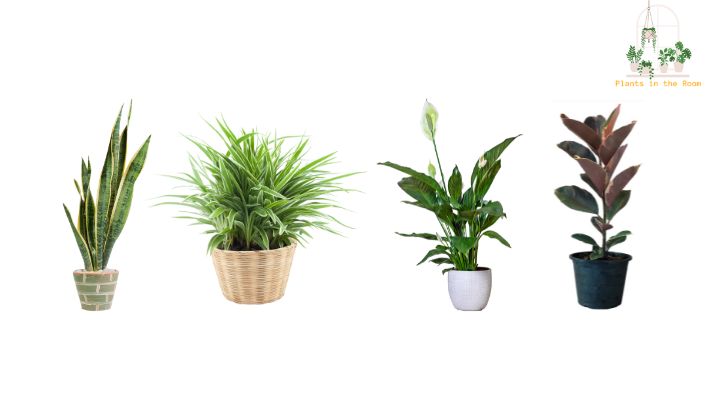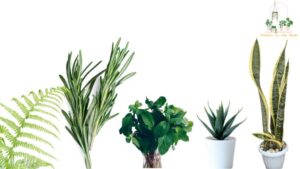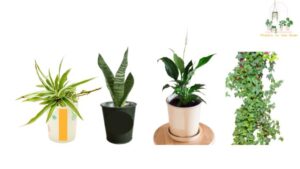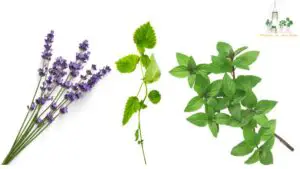This article covers the following areas –
- The Science Behind Oxygen-Producing Indoor Plants
- 1. Spider Plant (Chlorophytum comosum)
- 2. Snake Plant (Sansevieria trifasciata)
- 3. Peace Lily (Spathiphyllum)
- 4. Boston Fern (Nephrolepis exaltata)
- 5. Rubber Plant (Ficus elastica)
- 6. Areca Palm (Dypsis lutescens)
- 7. Chinese Evergreen (Aglaonema)
- 8. Aloe Vera (Aloe barbadensis miller)
- 9. English Ivy (Hedera helix)
- 10. Philodendron (Philodendron bipinnatifidum)
- In Conclusion
Living in an urban environment often exposes us to pollution and harmful substances that can affect our health. One simple solution to improving the air quality in our homes is to incorporate indoor plants. In this post, I’ll talk about some plants that can offer you the benefits of oxygen production and keeping indoor air pure.
The following air-purifying plants not only beautify our living spaces but also provide us with a source of oxygen while filtering out toxins.
| Plant | Oxygen Production Efficiency | Notable Air Purifying Properties |
|---|---|---|
| Spider Plant | High | Removes formaldehyde and xylene |
| Snake Plant | High (especially at night) | Removes benzene, formaldehyde, trichloroethylene |
| Peace Lily | Moderate to High | Removes benzene, formaldehyde, trichloroethylene, xylene, and ammonia |
| Boston Fern | High | Effective at restoring moisture in the air, thus indirectly promoting oxygen levels |
| Rubber Plant | Moderate to High | Removes formaldehyde |
| Areca Palm | High | Removes xylene and toluene |
| Chinese Evergreen | Moderate to High | Removes benzene and formaldehyde |
| Aloe Vera | High (especially at night) | Removes formaldehyde |
| English Ivy | High | Removes formaldehyde, benzene, and trichloroethylene |
| Philodendron | Moderate to High | Removes formaldehyde |
Please note that while these plants are all known to produce oxygen and purify the air, the efficiency of oxygen production and the degree of air purification can vary depending on specific plant health, size, and environmental conditions. The terms ‘High’, and ‘Moderate to High’ are relative rankings based on general observations and should not be taken as precise scientific measurements.
Now, let’s learn about the science behind oxygen-producing indoor plants and, later, all the minute details about these 10 plants.
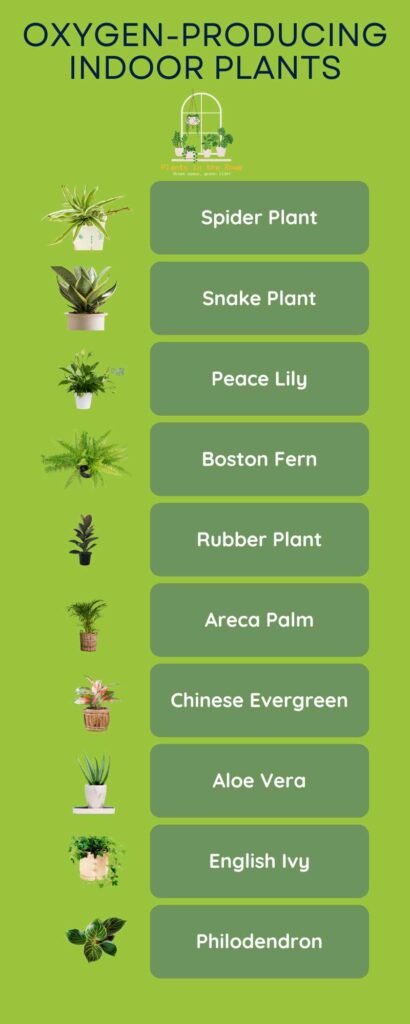
The Science Behind Oxygen-Producing Indoor Plants
Understanding the science behind oxygen-producing indoor plants gives us insight into their crucial role in creating a healthier home environment. Plants are biological wonders that function as natural air purifiers, producing oxygen and eliminating harmful toxins from our surroundings. This process involves intricate biological mechanisms such as photosynthesis and phytoremediation.
Photosynthesis and Oxygen Production
Photosynthesis is a remarkable process that underpins the survival of plants and is instrumental in producing oxygen. During this process, plants absorb carbon dioxide and light energy, primarily from the sun, or in the case of indoor plants, from artificial light sources.
This absorbed light energy is used to split water molecules into hydrogen and oxygen. The oxygen is released back into the environment, contributing to the oxygen content of the air, while the hydrogen is used to transform carbon dioxide into glucose.
Glucose is the primary energy source enabling the plant’s growth and development. This sugar molecule can also be converted into other substances, such as cellulose and starch, which serve as structural materials in the plant.
Through photosynthesis, indoor plants directly contribute to your home’s oxygen levels while mitigating carbon dioxide levels, particularly in confined spaces.
Indoor Plants and Air Purification
Apart from oxygen production, indoor plants play a significant role in air purification. They can absorb airborne toxins, including benzene, formaldehyde, and trichloroethylene, which are commonly found in homes due to off-gassing from furniture, paints, and other synthetic materials.
The absorption of these toxins occurs through a process known as phytoremediation. In this process, harmful chemicals are absorbed through the plant’s leaves and transported to their root zone. Here, the plant’s microorganisms break down the toxins into less harmful substances, which are then incorporated into the plant’s tissues or released harmlessly into the soil.
The air purifying abilities of indoor plants go beyond aesthetic appeal and oxygen production; they also help create a healthier living environment by reducing the concentration of harmful chemicals in your home. This dual role of oxygen production and air purification makes indoor plants integral to a healthy, breathable indoor atmosphere.
Oxygen-producing indoor plants play a significant role in enhancing indoor air quality. Here, I’ll discuss in greater detail 10 top oxygen-producing plants that you might want to consider adding to your home. Each of these plants contributes to a healthier atmosphere and brings its unique aesthetic appeal.
1. Spider Plant (Chlorophytum comosum)
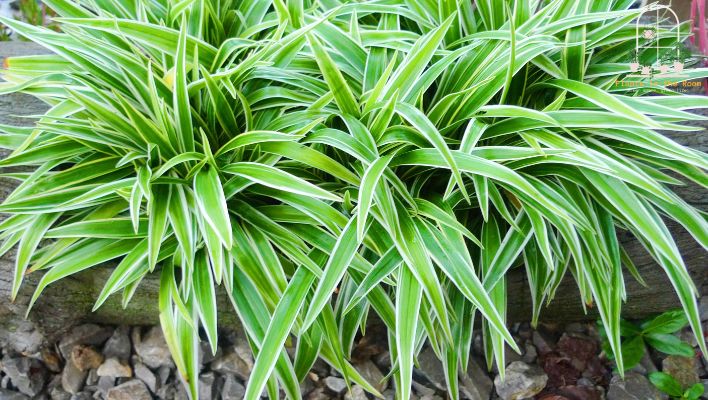
Originating from South Africa, the Spider Plant is appreciated for its adaptability and resilience, making it an excellent choice for novice gardeners and those with less-than-green thumbs. Its unique aesthetic appeal, featuring arching leaves with a striking variegated pattern, adds a touch of nature-inspired decor to any room.
What truly sets the Spider Plant apart is its extraordinary ability to produce oxygen and purify the air. NASA’s Clean Air Study found that it can remove up to 90% of the potentially cancer-causing chemical formaldehyde from the air. Additionally, it helps to battle against benzene, xylene, and carbon monoxide.
Caring for a Spider Plant is straightforward. It requires bright to moderate indirect sunlight and is tolerant of partial shade. However, placing it in a window that gets lots of sunlight can enhance its growth. The Spider Plant prefers well-drained soil and likes to dry out between watering sessions. Overwatering, particularly in winter, can cause the roots to rot.
Another benefit of the Spider Plant is its ability to produce siderites or plantlets, which can be easily propagated. This feature, combined with its non-toxic nature, makes it an excellent choice for households with pets or children.
2. Snake Plant (Sansevieria trifasciata)
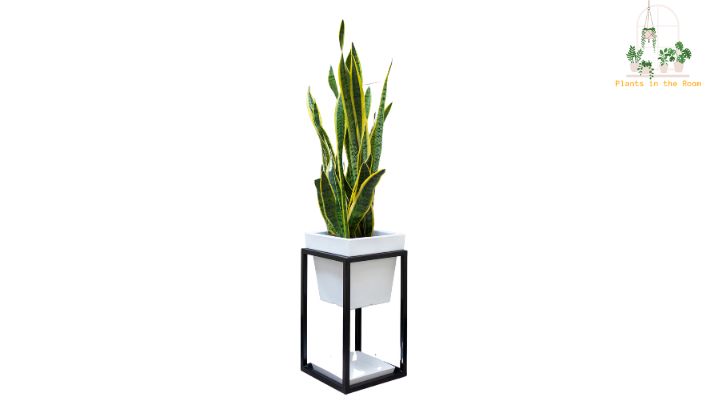
The Snake Plant, native to West Africa, is another robust and low-maintenance plant that serves as an effective air purifier. Its tall, upright leaves with sharp edges have earned it the nickname “Mother-in-Law’s Tongue.”
This hardy species can survive less-than-ideal conditions and is highly recommended for those new to indoor gardening.
Snake Plants are efficient oxygen producers, working to convert carbon dioxide into oxygen even during the night. This feature makes them an excellent addition to bedrooms. They are also powerful air purifiers, capable of absorbing toxins like formaldehyde, xylene, and nitrogen oxides, thereby improving the overall air quality.
These plants are adaptable and can survive in low light conditions, although they prefer indirect sunlight. They require minimal watering, and it’s crucial to let the soil dry out between waterings as overwatering can cause root rot.
Snake Plants have a preference for low-humidity environments, which is another reason they make excellent indoor plants.
3. Peace Lily (Spathiphyllum)

Known for its strikingly beautiful white flowers, the Peace Lily is more than just an ornamental plant. It’s a hardworking air purifier and a prolific oxygen producer. Native to tropical rainforests in Central and South America, Peace Lilies are accustomed to a warm and shady environment, which makes them ideal as indoor plants.
The Peace Lily holds a top spot in NASA’s list of air-purifying plants. It has the ability to remove several toxins, such as benzene, formaldehyde, and trichloroethylene, from the air. In addition to its air-purifying qualities, the Peace Lily is an excellent humidifier, increasing the humidity level in a room by up to 5%.
Care for Peace Lilies involves keeping them in low to medium, indirect light. While they can tolerate low light conditions, they won’t bloom in such environments. They require consistent watering, with a slight drying-out period between waterings.
If you notice the leaves turning yellow, this could be a sign of overwatering. They prefer high humidity levels, so misting them frequently or placing a humidifier nearby could promote growth.
While these plants add beauty and air-purifying qualities to your space, it’s essential to note that Peace Lilies are toxic when ingested, so they should be kept out of reach of pets and young children. Despite this, their lush foliage and elegant flowers make them a desirable addition to any indoor environment.
4. Boston Fern (Nephrolepis exaltata)

The Boston Fern, a type of sword fern that originates from humid forests and swamps, is a lush plant known for its air-purifying properties. The feather-like fronds of this fern serve as effective natural air humidifiers and purifiers, helping to restore moisture in the air and remove toxins.
Boston Ferns are known for their high transpiration rates, meaning they release considerable moisture into the air. Therefore, they can significantly improve indoor humidity levels, providing benefits for human health and other houseplants’ well-being.
Boston Ferns require consistent care. They prefer a cool place with high humidity and indirect light. Therefore, they are best kept in bathrooms or kitchens where humidity tends to be higher. They require their soil to stay consistently moist but not soggy, and they may require regular misting to maintain the desired humidity level.
5. Rubber Plant (Ficus elastica)
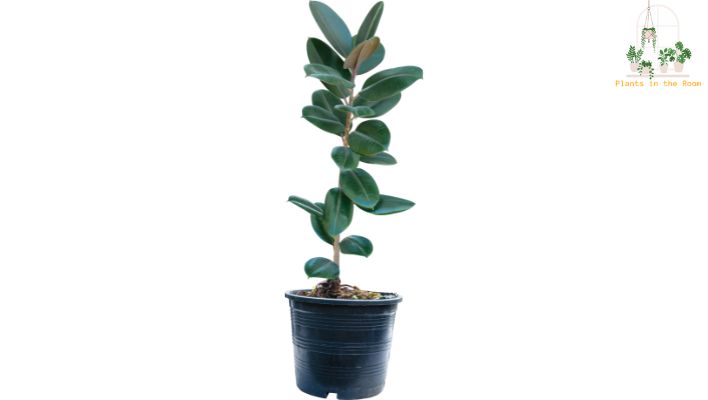
The Rubber Plant, native to Southeast Asia, is a sturdy and eye-catching plant with large, dark green, glossy leaves. This plant stands out for its exceptional air-purifying abilities, with a capacity to remove toxins like formaldehyde from the air.
Rubber Plants require bright, indirect light but can tolerate lower light levels. It’s important to avoid direct sunlight as this can scorch the leaves. They prefer to dry out between watering sessions and are more susceptible to overwatering than underwatering.
They thrive in more humid environments, so they benefit from regular misting. Additionally, to keep the large leaves dust-free and ensure maximum photosynthesis and air purification, they should be cleaned regularly with a damp cloth.
6. Areca Palm (Dypsis lutescens)
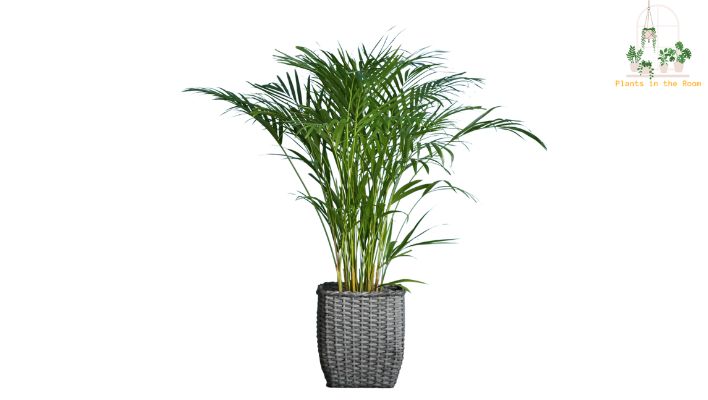
The Areca Palm, sometimes referred to as the Butterfly Palm or Golden Cane Palm, is a popular and elegant indoor plant known for its high oxygen output and air-purifying abilities. It’s a top-rated plant for removing harmful chemicals such as xylene and toluene, making it an ideal addition for a healthy home.
Areca Palms thrive in bright, indirect light and prefer evenly moist soil and high humidity. They can be a bit more demanding in care than other indoor plants, but their aesthetic and air-cleaning benefits make the extra care worthwhile.
7. Chinese Evergreen (Aglaonema)
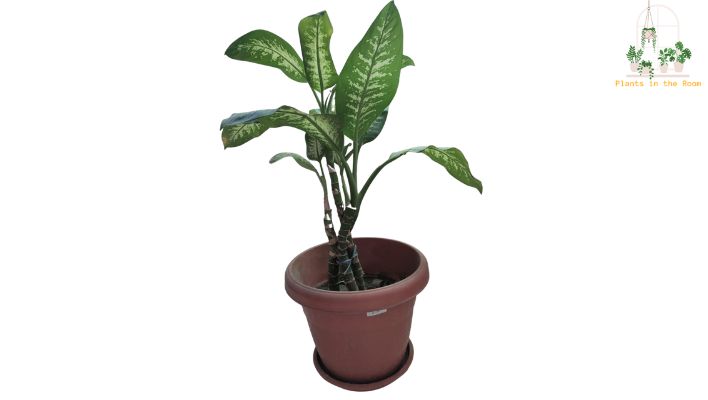
Chinese Evergreen, native to the tropical and subtropical regions of Asia, is a beautiful plant that is easy to care for and excellent at cleaning indoor air. They are adept at removing toxins such as benzene and formaldehyde from the environment.
Chinese Evergreens are low-light tolerant, making them perfect for spaces that don’t receive a lot of natural sunlight. They prefer their soil to dry out between waterings, making them relatively low maintenance in terms of watering requirements. They can tolerate lower humidity levels but prefer a more humid environment.
These plants are a wonderful combination of beauty, adaptability, and air-purifying abilities, making them an ideal indoor plant, especially for beginners.
Remember that all plants have their unique set of care requirements and environmental preferences. By understanding these needs, you can ensure a healthy, long-lived plant that will reward you with improved air quality and aesthetic appeal.
8. Aloe Vera (Aloe barbadensis miller)

Aloe Vera, widely recognized for its health and skin benefits, is a succulent plant species from the Arabian Peninsula. It’s a practical and attractive addition to your indoor plant collection. Known as the “plant of immortality” in ancient Egypt, it has been used for centuries for its healing properties.
Apart from its medicinal value, Aloe Vera is an exceptional oxygen producer, particularly at night, enhancing the air quality and aiding in better sleep. Its ability to remove formaldehyde makes it a useful air purifier as well.
Aloe Vera prefers bright, indirect sunlight and does well in various lighting conditions. It needs well-draining, sandy soil and doesn’t require frequent watering, making it a great low-maintenance plant. The key to a healthy Aloe Vera plant is to let the soil dry completely between waterings to prevent root rot.
9. English Ivy (Hedera helix)
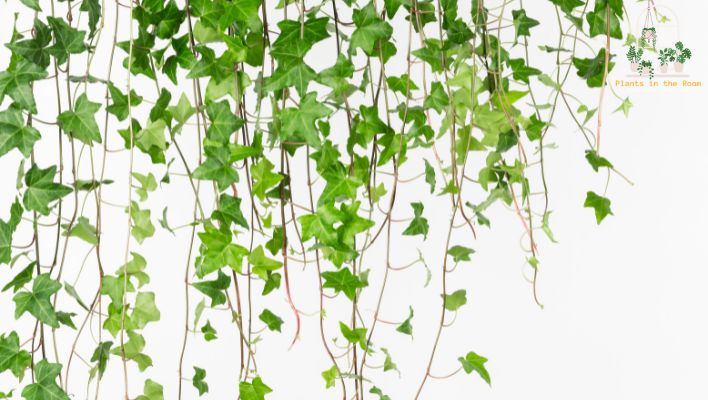
English Ivy, native to Europe and Western Asia, is a popular houseplant known for its attractive trailing vines and air-purifying properties. Its ability to adapt to various indoor environments and its tolerance for less-than-ideal conditions makes it a favorite among indoor plant enthusiasts.
English Ivy excels in removing several toxins from the air, including formaldehyde, benzene, and trichloroethylene. It’s an effective plant to improve indoor air quality and can also reduce mold in your home.
This plant prefers bright, indirect light but can tolerate lower light conditions, making it versatile for different spaces in your home. It thrives in moist soil but needs good drainage to avoid root rot. Regular misting can keep the leaves free from dust and mites and provide the humidity it needs.
10. Philodendron (Philodendron bipinnatifidum)
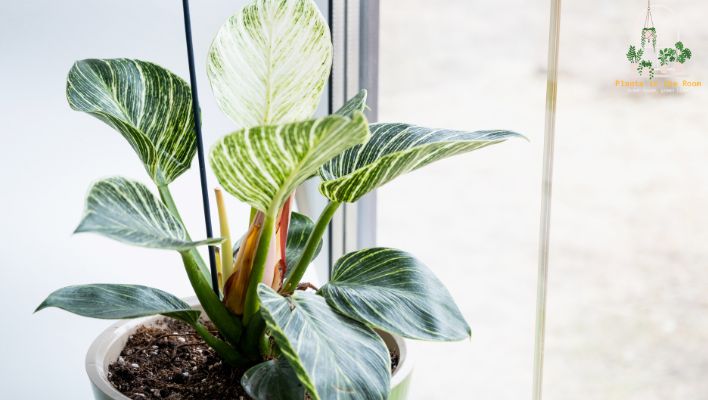
Philodendrons are loved for their large, glossy leaves and their air-purifying abilities. Native to the tropical regions of America, these plants are accustomed to warm and humid environments. They are excellent at removing toxins such as formaldehyde, making them a healthy addition to your indoor space.
Philodendrons are relatively easy to care for. They prefer bright, indirect light but can tolerate lower light conditions. They thrive best when their soil is allowed to dry out between waterings. Overwatering can lead to root rot, so it’s essential to ensure the plant has well-draining soil. They prefer a humid environment but are quite tolerant of average indoor humidity levels.
In Conclusion
Having indoor plants can do more than just enhance the aesthetics of your home. As we have seen, several indoor plants can produce oxygen and purify the air, making your living space healthier and more comfortable.
These 10 plants I’ve talked about are some excellent options to consider. These plants vary in oxygen production efficiency and ability to remove toxins, but each contributes significantly to improving indoor air quality.
It’s important to remember that while these plants are beneficial, they should complement, not replace, proper ventilation and regular home cleaning to maintain a healthy indoor environment. Moreover, care must be taken with any plant to ensure it is kept in a condition where it can thrive and thus provide these benefits.

